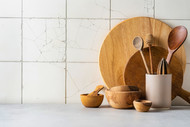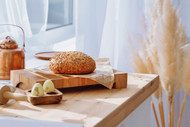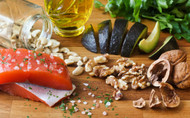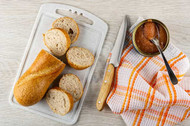
Choosing the Right Cutting Board: Wood vs. Plastic
Feb 23rd 2021
When selecting any item that will be used in food preparation, you should consider how it will affect food safety. This is especially true of cutting boards. Since a variety of foods touch the surface of a cutting board, cross-contamination can easily occur. Even if you carefully sanitize the board between uses, bacteria that grows in cracks can be difficult to eliminate. As you consider what kind of cutting board is best for you, be sure to take into account the process of maintaining them.
Today, we are going to compare plastic and wood cutting boards, paying attention to how they compare from the perspective of food safety.
Benefits and Disadvantages of Plastic Cutting Boards
Plastic cutting boards have several advantages over other materials. Since they are less expensive than other cutting boards, replacing them often is a cost-effective way to ensure you have a sanitary surface. Unlike wood and stone, plastic is not porous, so cleaning them is much easier. A wood cutting board requires regular oiling to remain waterproof, but you don’t have to treat a plastic cutting board to keep it safe.
Despite these positives, using a plastic cutting board has several drawbacks. Knives may scratch the cutting board, and these cuts are hard to clean. Bacteria can grow in these crevices and then be transferred to food. Some of these bacteria can cause foodborne illnesses.
Harder plastics can also damage and dull knives. Not only do you have to replace plastic cutting boards more frequently than wood ones, you also may find yourself needing new knives more often.
Pros and Cons of Wood Cutting Boards
Like with plastic, wood cutting boards have many benefits and some downsides as well. Let's look at their advantages first. Wood is much more durable than plastic, so a wood cutting board does not need to be replaced as often. As a more malleable material, it does not dull knives as quickly. Wood cutting boards are available in a variety of colors and styles, so you can find one to match almost any kitchen.
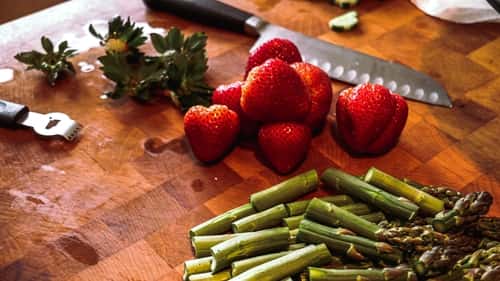
Are Wooden Cutting Boards More Hygienic Than Plastic?
As mentioned before, plastic cutting boards can easily store bacteria. Because a properly finished wooden cutting board is virtually waterproof when properly cared for, wood does not have the same safety concerns.
Wood cutting boards have several disadvantages you should also consider before purchasing. Keep in mind that maintaining wood boards requires some effort. They are not dishwasher safe. You will need to oil your cutting board regularly to prevent scratching. Wood is heavier than plastic, making a wood cutting board harder to store.
Lastly, wood cutting boards are more expensive. Though they last much longer, you have to pay for that extended use. Still, the investment can be well worth it for avid home cooks.
Is A Wood or Plastic Cutting Board Better?
Wood cutting boards are often considered better than plastic cutting boards because wood is much more durable and keeps knives sharper. But ultimately, the decision of whether to choose plastic or wood comes down to personal preference. Plastic may be better suited to people who only cook occasionally. Wood is the ideal choice if you don’t mind spending a little extra upfront and taking the time to maintain it properly.
As you consider which type of cutting board is best for you, browse Hardwood Lumber's selection of wooden cutting boards. From butcher block to live edge and from wide paddle to round, we have something for every kitchen.

